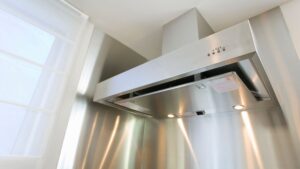Roof Ventilation Basics: Why It Matters for Your Home

Roof ventilation is a critical yet often overlooked aspect of home maintenance. A well-ventilated roof not only enhances the comfort of your home but also extends the lifespan of your roofing materials. This guide dives into the basics of roof ventilation, explaining why it matters and how it can save you money in the long run.
What Is Roof Ventilation?
Roof ventilation involves the intentional circulation of air through your attic or roof space. This is typically achieved using a combination of intake vents (at the roof’s edge) and exhaust vents (near the peak). Together, they create a continuous flow of air that helps regulate temperature and moisture levels.
Why Is Roof Ventilation Important?

Proper roof ventilation benefits your home in several ways:
1. Prevents Moisture Buildup
Without adequate ventilation, moisture from daily activities like cooking, bathing, or laundry can accumulate in your attic. Over time, this can lead to:
- Mold and mildew growth
- Wood rot
- Damage to insulation
2. Regulates Temperature
In the summer, heat trapped in your attic can cause your home to become uncomfortably warm, increasing your cooling costs. Ventilation helps expel hot air, keeping your home cooler and reducing strain on your air conditioning system.
3. Extends Roof Lifespan
Excessive heat and moisture can degrade roofing materials, causing shingles to warp or underlayment to deteriorate. Proper ventilation helps maintain the integrity of your roof, prolonging its lifespan.
4. Prevents Ice Dams in Winter
In colder climates, a poorly ventilated roof can lead to ice dams. These occur when warm air from your home causes snow on the roof to melt, only to refreeze at the edges. Ice dams can cause significant damage to shingles, gutters, and your roof structure.
Key Components of Roof Ventilation

1. Intake Vents
These are typically located along the eaves or soffits. They allow cool air to enter the attic, creating the airflow necessary for effective ventilation.
2. Exhaust Vents
Placed near the roof’s peak, these vents let hot, moist air escape. Common types include:
- Ridge vents
- Gable vents
- Static roof vents
3. Ventilation Fans
For homes in extreme climates, powered or solar ventilation fans can enhance airflow, ensuring optimal temperature and moisture control.
Signs Your Roof Lacks Proper Ventilation
How can you tell if your roof’s ventilation isn’t up to par? Look for these common signs:
- Excessively hot attic during summer
- Mold or mildew in your attic or on insulation
- Ice dams forming during winter
- High energy bills
- Curling or damaged shingles
Improving Your Roof’s Ventilation
If you suspect ventilation issues, a professional roofing contractor can assess your current system and recommend improvements. Potential solutions include:
- Installing additional intake or exhaust vents
- Replacing old or clogged vents
- Adding insulation to improve energy efficiency
The Cost of Poor Ventilation
Ignoring roof ventilation can lead to costly repairs and inefficiencies, such as:
- Premature roof replacement
- Higher utility bills due to inadequate temperature regulation
- Structural damage from prolonged moisture exposure
Conclusion
Roof ventilation isn’t just a technical detail—it’s an essential factor in protecting your home, reducing energy costs, and maintaining your roof’s longevity. By ensuring proper airflow, you create a healthier, more comfortable living environment while safeguarding your investment. Whether you’re upgrading an older roof or planning a new installation, don’t overlook the importance of a well-ventilated roof.
